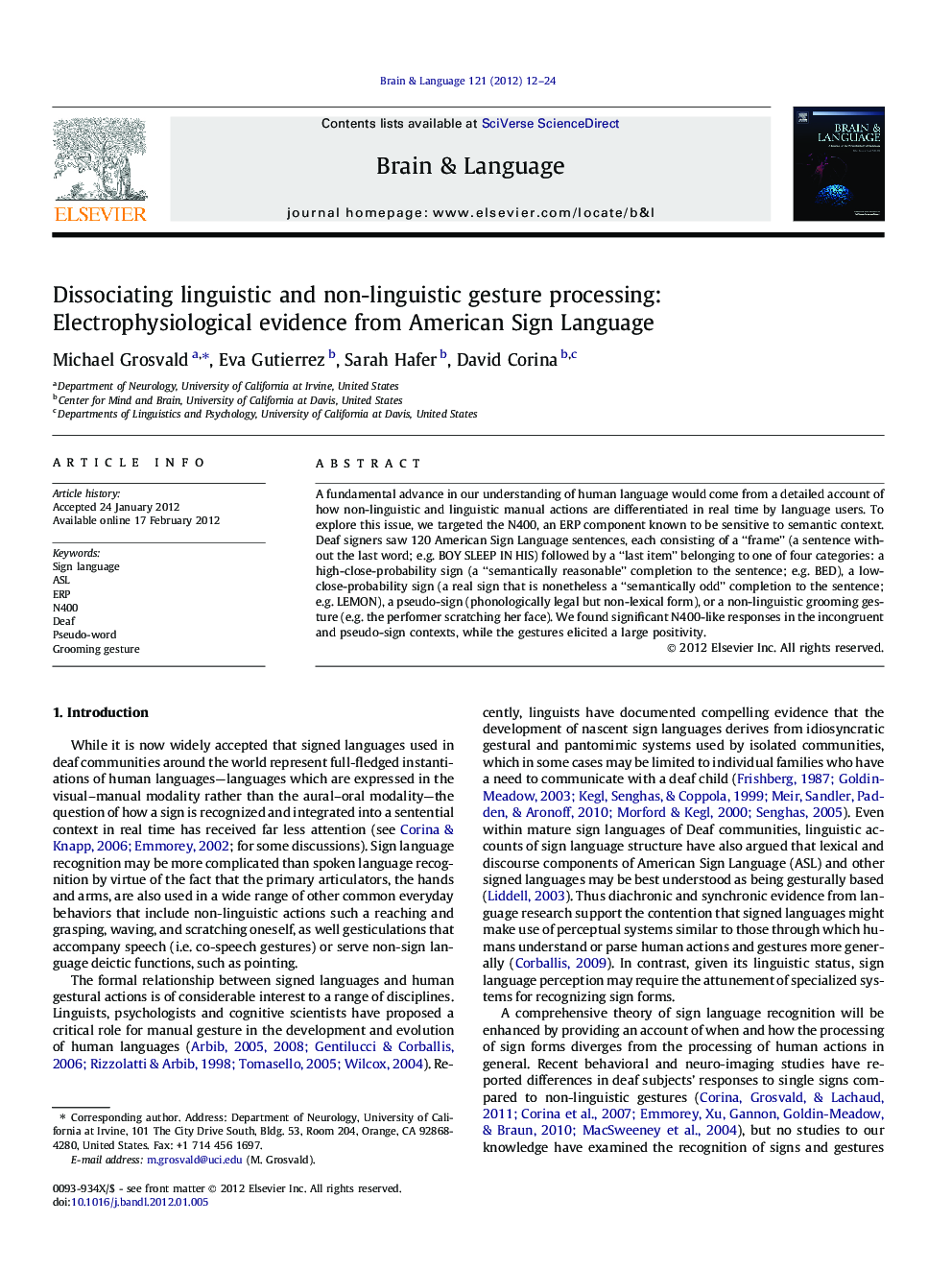| کد مقاله | کد نشریه | سال انتشار | مقاله انگلیسی | نسخه تمام متن |
|---|---|---|---|---|
| 925434 | 921493 | 2012 | 13 صفحه PDF | دانلود رایگان |

A fundamental advance in our understanding of human language would come from a detailed account of how non-linguistic and linguistic manual actions are differentiated in real time by language users. To explore this issue, we targeted the N400, an ERP component known to be sensitive to semantic context. Deaf signers saw 120 American Sign Language sentences, each consisting of a “frame” (a sentence without the last word; e.g. BOY SLEEP IN HIS) followed by a “last item” belonging to one of four categories: a high-close-probability sign (a “semantically reasonable” completion to the sentence; e.g. BED), a low-close-probability sign (a real sign that is nonetheless a “semantically odd” completion to the sentence; e.g. LEMON), a pseudo-sign (phonologically legal but non-lexical form), or a non-linguistic grooming gesture (e.g. the performer scratching her face). We found significant N400-like responses in the incongruent and pseudo-sign contexts, while the gestures elicited a large positivity.
► ERP study of Deaf signers’ processing of signs, pseudo-signs and gestures in ASL sentence context.
► Semantically incongruent signs elicit negativity (N400) relative to congruent sign baseline.
► Phonologically legal pseudo-signs elicit somewhat larger N400 than incongruent signs.
► Non-linguistic grooming gestures elicit very large-amplitude positivity relative to baseline.
Journal: Brain and Language - Volume 121, Issue 1, April 2012, Pages 12–24